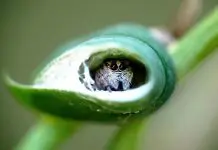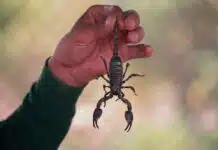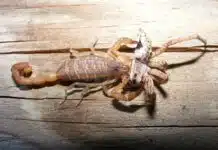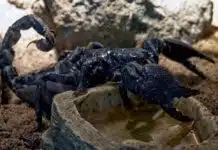If you’re looking for a small animal companion that’s cute, fuzzy, and low-maintenance, a chinchilla might be the perfect pet for you! Chinchillas are social creatures with soft fur and curious personalities that can make them unforgettable addition to your household. But before rushing out to adopt or purchase one of these critters, it’s important to consider the cost of owning a chinchilla.
The Basics: What Are Chinchillas?
Chinchillas are rodents native to South America and come in a variety of colors, from gray and beige to white and black. They’re known for their incredibly dense fur, which helps keep them warm in their natural mountain habitat. Because of this thick coat, they’re prone to overheating if kept in temperatures above 75 degrees Fahrenheit.
In terms of behavior, chinchillas are playful animals that enjoy climbing and exploring. They can live up to 20 years in captivity with proper care but require regular interaction with their human caretakers as well as other chinchillas.
The Cost of Owning a Chinchilla
Before committing to bringing a chinchilla into your home, it’s crucial to understand the associated costs. The initial price tag for purchasing a pet-quality chinchilla from a breeder or pet store ranges from $100-$400 depending on factors such as coloration and age.
However, there are also options for adopting through rescues or shelters which can cost anywhere from $50-$150. Beyond the cost of the animal itself, there are additional expenses involved in caring for your chinchilla properly.
A suitable cage runs upwards of $100 while necessary accessories like food dishes, water bottles, hay racks, etc., can add another $50-$100 depending on quality. Feeding your new furry friend is also a consideration.
While hay and pellets are relatively inexpensive ($30-$50 per month), chinchillas also require dust baths to clean their fur and promote good hygiene. Specialized dust can be purchased for $10-$20 per bag.
Overall, the price of owning a chinchilla can vary depending on where you purchase or adopt from, the quality of supplies you choose, and any additional veterinary expenses that may arise. It’s important to budget accordingly to ensure your new pet receives the proper care they need.
How Much Does a Chinchilla Cost?
If you are considering getting a chinchilla, one of the first questions you may ask is, “How much does a chinchilla cost?” The price of a chinchilla can vary depending on several factors, but generally, they are not cheap pets. On average, you can expect to pay around $100-$250 for a standard grey chinchilla.
However, the price range for purchasing a chinchilla is quite broad and can go up to $400 or more for rare colors such as beige or black velvet. Additionally, if you are looking for show-quality chinchillas with superior genetics and overall health, these can cost upwards of $500.
Average Price Range for Purchasing a Chinchilla
The average price range for purchasing a chinchilla depends on several factors such as age and color. Baby kits typically cost more than adult chinchillas because they are considered more desirable due to their cuteness factor.
Prices also vary depending on fur color and pattern. Standard gray, beige, and white-colored chinchillas tend to be less expensive than rarer colors like violet or sapphire.
Chin breeders usually charge more than pet stores or shelters because they invest time in breeding high-quality specimens with good lineage. Expect to pay between $150-$350 at pet stores or animal shelters while buying from reputable breeders usually cost about $100-$500.
Factors That Affect the Price of A Chinchilla
Several factors affect the price of a chinchilla including age, gender, fur color, and pattern as well as temperament. Younger kits will typically require more attention from their owners so breeders will charge higher prices for those. Fur color is another factor that affects pricing; the rarer the coat coloration/pattern combination is in comparison with the standard grey, white, or black-and-white pattern, the more expensive the chinchilla will be.
Chinchillas with unique characteristics such as having a rare fur color or a friendly temperament will also be much more expensive than their average counterparts. If you are looking to breed or show your chinchilla, it is best to purchase from a reputable breeder at a higher price.
Cage and Accessories
When it comes to housing your chinchilla, a cage is a must-have. A proper cage should be spacious enough for your furry friend to move around, climb, and play. The size of the cage will depend on how many chinchillas you have and their activity level.
A good rule of thumb is to get a cage that is at least 24 by 24 inches in width and length, with a height of at least 24 inches. A wire cage with metal floors is ideal for chinchillas as it allows for proper ventilation.
However, make sure that the spaces between the wires are no larger than one inch to prevent your pet from getting stuck or escaping. In addition to the cage itself, you’ll need accessories such as water bottles, food dishes, hay racks or feeders, chew toys, and exercise wheels.
You can easily find cages designed specifically for chinchillas online or in pet stores. Be prepared to spend anywhere between $100 – $500 depending on the size and quality of the product.
Food and Bedding
Chinchillas require specific types of food to stay healthy. Their diet should consist primarily of hay; timothy hay is recommended as it provides essential nutrients needed by your pet’s digestive system.
You can also supplement your diet with high-quality pellets that contain vitamins and minerals. Bedding materials are necessary to keep your chinchilla comfortable in its cage while also minimizing odors from urine and feces.
Popular options for bedding include recycled paper-based products, wood shavings that are kiln-dried or aspen shavings which are dust-free. Expect to spend around $30-50 per month on food and bedding depending on your location’s prices.
Veterinary Expenses
Just like any other pets, chinchillas may need veterinary care at some point in their lives. Annual checkups are recommended to ensure your pet is healthy and to catch any potential issues early on. Additionally, chinchillas may need treatment for dental or digestive problems, which can be costly.
Make sure you have a veterinarian that specializes in small animals or exotic pets near you. The cost of annual check-ups can range from $50-$150 depending on your location and the veterinarian’s fees.
Unexpected medical expenses for sick pets can be significantly higher, easily costing several hundred dollars. It’s important to budget for these expenses so that you’re not caught off guard when an emergency arises.
Owning a chinchilla involves some additional costs beyond the initial purchase price of the animal itself. A suitable cage and accessories will cost around $100-500 depending on the quality and size of products used, while food and bedding will set you back around $30-$50 per month.
Veterinarian bills should also be considered; annual checkups range from $50-$150 while unexpected medical costs could be several hundred dollars more. By being aware of these potential expenses, you can properly prepare for owning a happy and healthy chinchilla!
Tips for saving money on owning a Chinchilla
Adopting from a rescue or shelter
One way to save money on owning a chinchilla is to adopt one from a rescue or shelter. Not only is this option typically less expensive than purchasing from a breeder, but it also allows you to give a loving home to an animal that may have been abandoned or mistreated.
Many animal shelters have small animals like chinchillas available for adoption, and may even offer discounted adoption fees during certain times of the year. When adopting a chinchilla, it’s important to do your research first and understand its specific needs.
Make sure the shelter staff can provide information on the chinchilla’s age, health history, and personality so you can make an informed decision. Chinchillas require spacious cages with plenty of room to jump and play, so make sure you have adequate space in your home before adopting.
DIY cage and accessory options
Another way to save money on owning a chinchilla is by creating their cage and accessories yourself. This not only saves money but can also be a fun project for both you and your furry friend!
For example, instead of buying an expensive store-bought cage, consider building one yourself using materials such as PVC pipes or wire mesh. Chinchillas also love toys and accessories, but these can add up quickly in cost if purchased from pet stores.
Instead of buying pre-made items, consider making your own using materials such as cardboard boxes or untreated wood blocks. Be sure any material used is safe for chinchillas – avoid items with sharp edges or small parts that could be swallowed.
Buying in bulk for food and bedding
Buying in bulk can save you significant amounts of money when it comes to feeding and bedding your chinchilla. Many pet stores offer bulk options for chinchilla food and bedding, which can be more cost-effective than buying individual bags.
However, make sure to check the expiration date on any bulk items to ensure they will last until you use them. If you have the space to store larger quantities of food and bedding, consider purchasing from online retailers or wholesale stores.
This can be a great way to save money in the long term, but make sure to factor in shipping costs and storage space before making a purchase. Owning a chinchilla can be costly but there are ways to save money without sacrificing your pet’s health or happiness.
Consider adopting from a rescue or shelter, creating your own cage and accessories, and buying in bulk for food and bedding. With these tips in mind, you can provide a loving home for your furry friend while also staying within budget.
Conclusion
Recap of Key Points
In this article, we have discussed the cost of owning a chinchilla. We have gone over the average price range for purchasing a chinchilla and the factors that affect the price, such as age and color. We have also talked about additional costs to consider when owning a chinchilla, including the cage and accessories, food and bedding, and veterinary expenses.
We provided some tips for saving money on owning a chinchilla. Overall, it is important to keep in mind that owning a chinchilla is not cheap.
While adopting from a rescue or shelter can help reduce costs, there are still many expenses to consider. It is important to budget accordingly and be prepared for unexpected expenses.
Final Thoughts on the Cost of Owning a Chinchilla
Despite the costs associated with owning a chinchilla, they can make great pets for those who are willing to invest time and money into their care. Chinchillas are intelligent animals with unique personalities that can bring joy to their owners’ lives. Additionally, by taking steps to save money on their care (such as DIY options or buying in bulk), owning a chinchilla can become more affordable over time.
While owning a chinchilla definitely comes with its financial responsibilities, it can be well worth it for those who are willing to make the commitment. By being mindful of costs and investing in quality care for your furry friend, you can enjoy many happy years together.

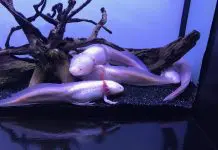

![Sick Axolotl, Fungus, Stress Symptoms [Axolotl Illness Guide 2025] Axolotl fungus](https://exopetguides.com/wp-content/uploads/2018/06/axolotl-218x150.jpg.webp)

